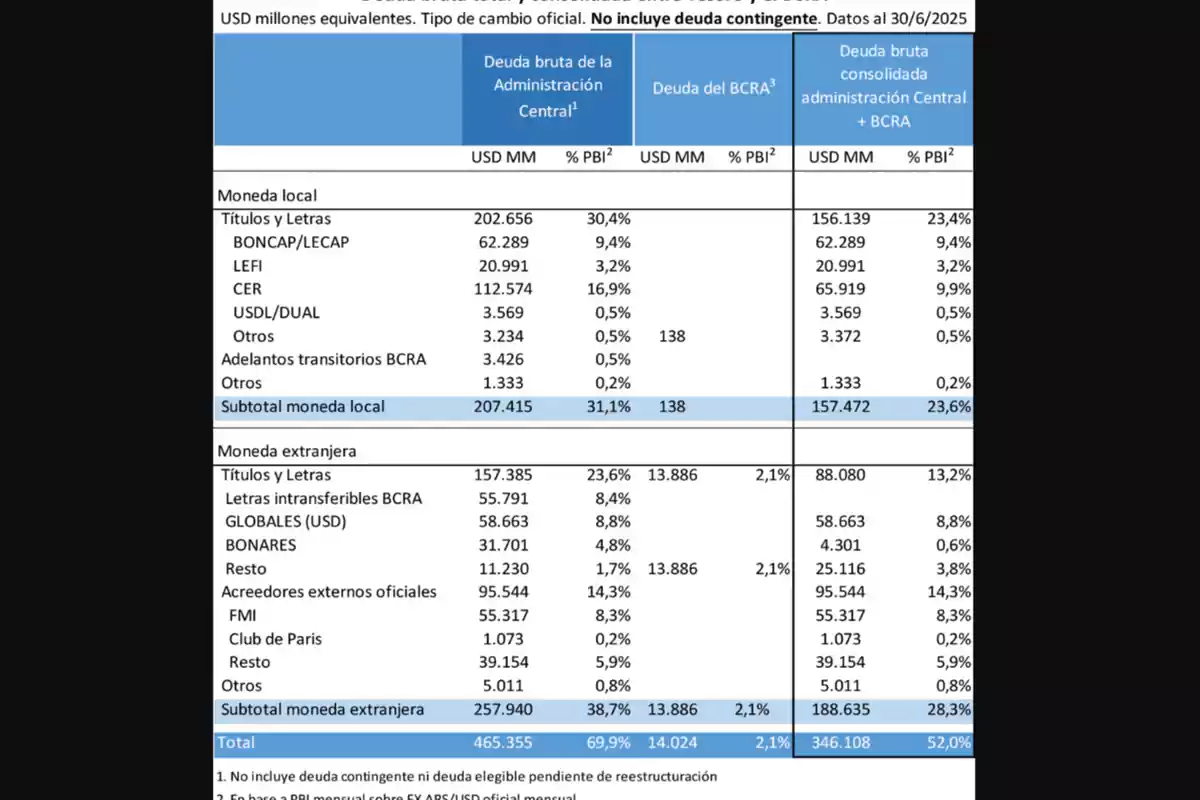
Thanks to Milei's administration, Argentina's net debt fell to 52% of GDP in June.
This was stated in a report by the consulting firm Quantum Finanzas
The gross debt of the National Public Sector reached USD 465.355 billion at the end of June 2025, a figure equivalent to 70% of the Gross Domestic Product (GDP). However, if cross-holdings between the National Treasury and the Central Bank (BCRA) are deducted, net debt drops significantly to USD 346.108 billion, representing 52% of GDP.
This was indicated in a report by consulting firm Quantum Finanzas, prepared using official data from the Secretariat of Finance. The consolidation exercise mainly considers the BCRA's remunerated liabilities transferred to the Treasury and public securities held by state agencies, excluding them from the total calculation.
What debt consolidation between the Treasury and the BCRA implies
Consolidating positions between the main agencies of the State allows for a more accurate view of the real weight of the debt. According to Quantum, this analysis "reduces the gross debt stock from 69% to 52% of GDP" and provides a better reflection of the effective commitments with the private sector and external creditors.

The report clarifies that the holdings of the Sustainability Guarantee Fund (FGS) of Anses, which holds public securities worth USD 52.333 billion in its portfolio, were not included.
Stock evolution and influencing factors
Between July 2024 and June 2025, gross debt increased by USD 13.285 billion, despite a net cancellation of USD 21.386 billion through swaps and payments being recorded. This apparent contradiction is due to effects such as:
- Capitalization of interest for USD 39.588 billion in instruments such as Lecaps and Boncaps.
- Adjustment by CER, which added USD 10.397 billion.
- Appreciation of the peso, which increased the dollar value of debt indexed in local currency.
55% of the total stock is denominated in foreign currency, while the remaining 45% corresponds to obligations in pesos (99 pesos), many of which are adjusted for inflation.

Regional comparison
With a consolidated debt ratio of 52% of GDP, Argentina is approaching the region's average levels. However, the composition and risk of that debt differ markedly. For example, Brazil has debt equivalent to 90% of GDP, but almost entirely in local currency and with smooth access to financing.
In contrast, Argentina keeps a high dependence on dollar-denominated debt, a strong presence of indexed instruments, and growing intra-state financing, which poses additional challenges for fiscal sustainability.
Quantum concludes that net debt is a relevant figure, but that its analysis must be complemented by other factors: maturities, rates, currency, refinancing, and macroeconomic context.
More posts: